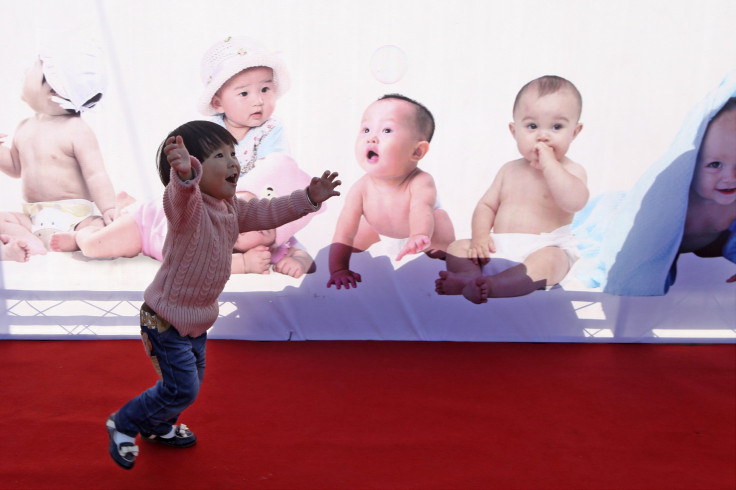China One-Child Policy Reform Update: More Impact On Consumption Than Reversing Aging Demographic Trends

Beijing’s one-child policy reform appears to be shaping up as a piecemeal effort by local governments that won’t be sufficient to reverse the aging of China’s population, but could benefit consumption patterns, a new report says.
According to a Societe Generale research note on the Chinese reform efforts, published Thursday, Beijing has already announced a major change to the policy – couples will be allowed to have two children if one of the parents is an only child -- as millions born under the one-child rule are. But the timing for each province’s implementation will be determined by local authorities.
“The directions promised by Beijing are encouraging, but the approach is likely to be a decentralized one of local experiments under a set of general guidelines laid down by the central government,” the note said. “As a result, the near-term impact is probably highly uncertain, if not insignificant.”
A major motivation for the reform is China’s increasingly skewed gender imbalance, as well as the rapid aging of the population. The share of population between 15 and 60 years old recorded a first-ever decline in 2012, and that of population between 15 and 65 will begin contracting as early as the latter half of the current decade, according to data from the United Kingdom.
Yet the change is too late, and too timid in scope, to address the long-term challenge of China’s rapidly aging demographics.
“Assuming the most optimistic estimate on the street of 2 million more babies annually if the new policy gets fully implemented nationwide, the fertility rate would still be lower than 2 – the minimum replacement rate required to keep the population stable,” Societe Generale writes.
“Obviously, the new policy will not be able to make any different to that trend [of decline] until at least 2030,” the report added.
But the reform is not too late to provide a healthy stimulation for China’s consumption – a worthy result as the Third Plenum saw Beijing’s resolve to shift to a consumption-driven, healthier, more sustainable economy.
“On average, Chinese parents spend about 1,500 – 2,000 yuan ($247.70 - $330.27) every month on a new baby,” according to the report. “That would translate into 48 to 96 billion yuan additional consumption every year, which, although still quite marginal in percentage of GDP terms (less than 0.2 percent), would be significant enough for a number of sectors.”
© Copyright IBTimes 2024. All rights reserved.




















